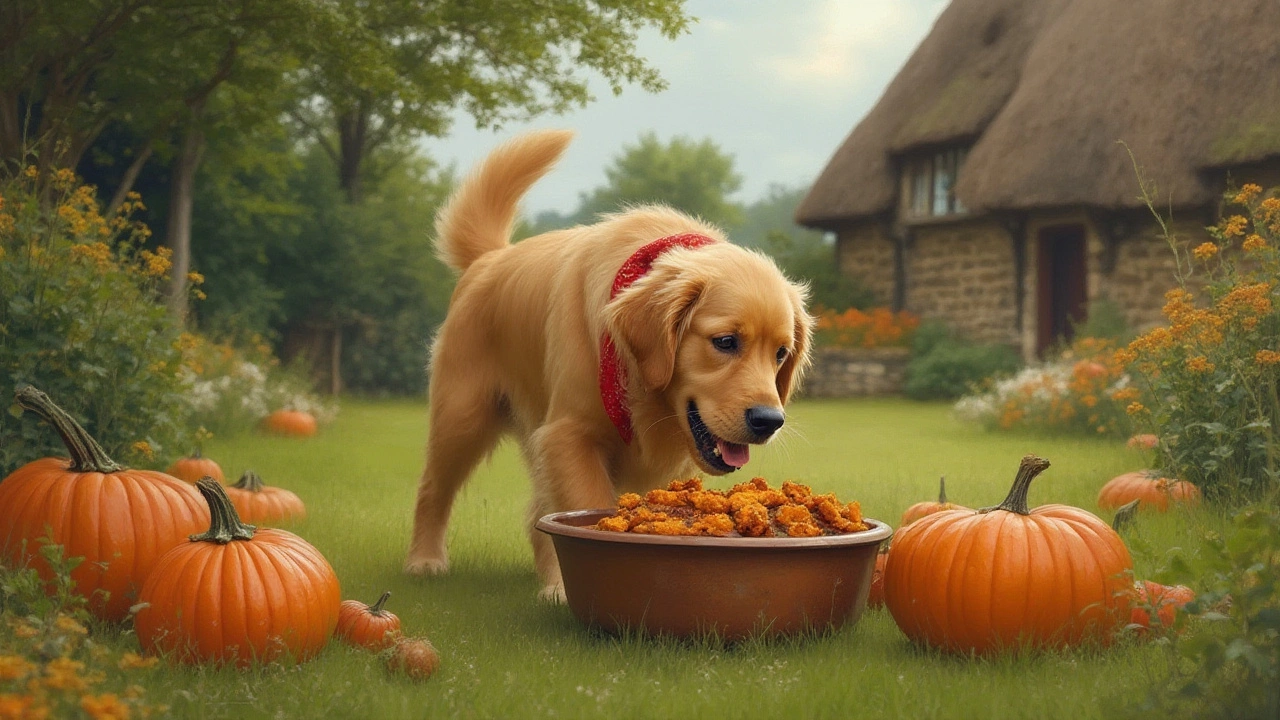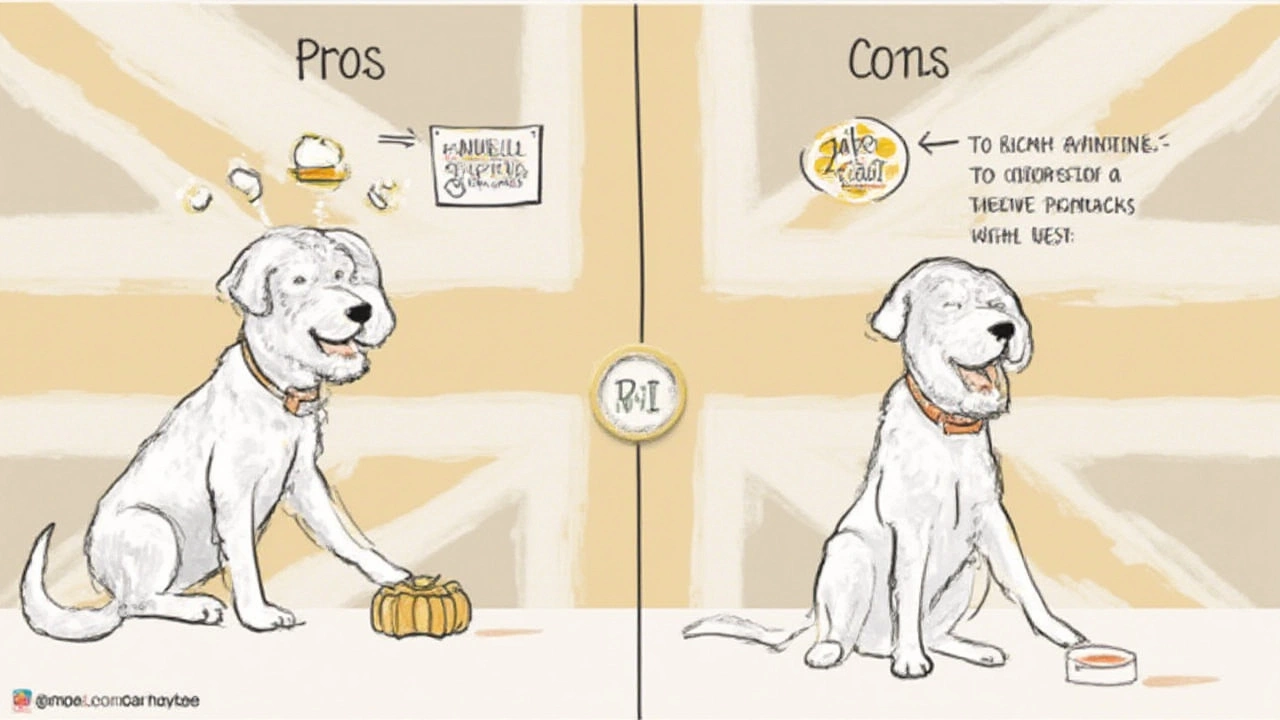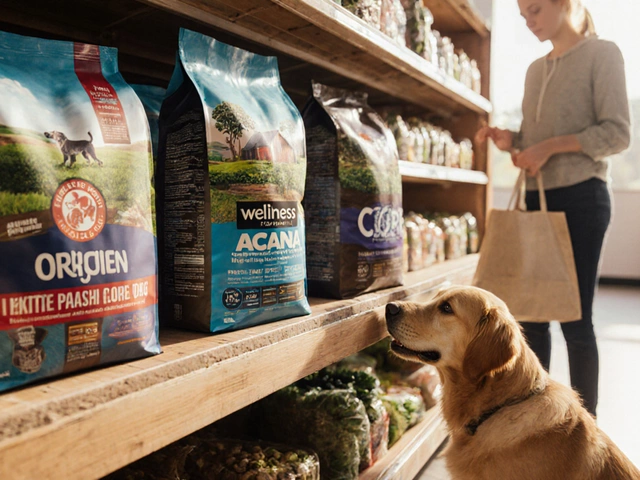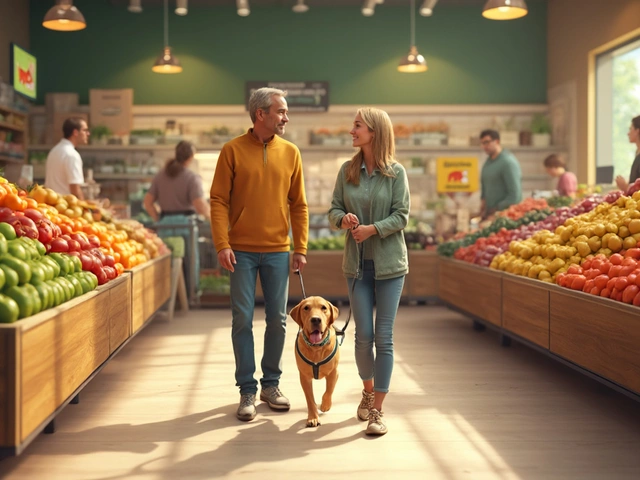Try to picture a dog’s dinner bowl these days—kibble, a scoop of wet food, and then, every so often, a golden dollop of pumpkin. Not pumpkin pie filling, but simple, canned, or steamed pumpkin. So many pet owners are rushing to add this veggie to their dog’s bowl, believing it packs only benefits. Stories pop up everywhere about improved digestion and glossy coats. But does pumpkin always agree with every pup? People rarely talk about what happens if things go sideways. Turns out, pumpkin isn’t foolproof when it comes to canine tummies. That's why a real understanding of both the upsides and the possible setbacks matters way more than just jumping on the latest trend.
Understanding Why Dogs Eat Pumpkin—and When It Goes Wrong
Start with the most obvious: pumpkin seems harmless and wholesome. It’s loaded with fiber, and that’s what catches attention. According to research published by Tufts Cummings School of Veterinary Medicine, pumpkin’s fiber (soluble and insoluble alike) can bulk up stool in diarrhea cases or help soften things when a dog is constipated. Sounds almost magical, right?
Yet that same fiber, when overdone, is the root of most side effects. Think about this: dogs’ digestive systems aren’t built for massive amounts of plant fiber. A small dog needs just a small spoonful, while a giant breed can handle maybe a few tablespoons. A study from 2023 observed that excessive dietary fiber in dogs—like what happens from overfeeding fibrous foods such as pumpkin—causes loose, sometimes urgent bowel movements. That’s not just a small inconvenience if you’ve ever had to speed-walk a dog outside in the rain at 3 AM!
But there’s more to this orange veggie. Pumpkin is chock-full of vitamin A, potassium, and even modest protein, all good things in moderation. The trouble pops up if your dog is already on a fortified vitamin diet or supplement routine. Too much vitamin A can mean toxicity for their liver—think weakness, confusion, or even bone changes over time. The FDA has flagged rare incidents where excessive vitamin A in pet treats led to unnecessary vet visits.
Another less talked-about risk: pumpkin’s natural sugar. While it’s not as sugary as fruit like banana, it still counts. If your dog is diabetic or has weight issues, regular big spoonfuls of pumpkin wreck the careful balance you and your vet are trying to build. And if your pup swaps out their regular meal for heaps of pumpkin, suddenly their protein and calorie intake plummet, setting them up for sluggishness or, in chronic cases, malnutrition.
Canned pumpkin is usually safe, but not all cans are created equal. Odd as it may sound, some brands sneak in added salt, sugar, or xylitol, a sugar substitute that’s toxic to dogs even at tiny doses. The American Veterinary Medical Association lists xylitol as a top emergency-room cause for dogs every year.
Finally, let’s talk about the seeds and skin. Some folks toss roasted seeds into treats, thinking it’s an extra nutrition boost. The issue: unpeeled or seasoned seeds are tough for your dog’s gut. They could choke, or worse, the seeds end up causing a blockage. Pumpkin skin, meanwhile, is hard to digest and can irritate your pet’s stomach or even scrape their intestines if swallowed in thick strips.
Just to give you some numbers to ground things, here’s a quick look at what’s actually in 100 grams (about 7 tablespoons) of cooked pumpkin when you serve it plain, no extras:
| Nutrient | Amount per 100g |
|---|---|
| Calories | 20 kcal |
| Fiber | 1.1 g |
| Sugar | 2.8 g |
| Vitamin A | 8513 IU |
| Potassium | 230 mg |
| Protein | 0.7 g |
Serve a scoop here and there, and most dogs enjoy the benefits. Feed it daily, in heaps, and stomach upsets, nutrient imbalances, and even dangerous emergencies become far more likely than anyone expects.

Spotting Pumpkin Side Effects—And What To Do If They Happen
It’s easy to miss when a dog’s having trouble with their new veggie treat. A lot of warning signs look like everyday dog stuff—extra pooping, loose stools, mild tummy gurgling. But here’s the thing: those changes mean your dog’s body is sending you clues, hinting pumpkin might not be a perfect match or that you’ve crossed into too-much territory.
So, what actual side effects show up most? Soft stool or mild diarrhea usually hit first. It could start as just one messy walk, but if you keep giving too much pumpkin, your dog can’t get back to normal. They might strain or squat with little to nothing coming out (hello, constipation), or graze grass outside to settle their stomach. In small breeds, this can even tip into dehydration if things drag out more than a day.
Other signs turn up when pumpkin disrupts your dog’s normal eating. They might skip meal times or seem less interested in their regular food, which sounds harmless—until you do the math and realize the calories, protein, and other essentials aren’t adding up anymore. Even if pumpkin seems pretty bland, dogs can develop food aversions or even low-level nausea if their system is overloaded.
Rarely, you’ll see vomiting. That’s a red flag—if your dog throws up within an hour or two of eating pumpkin, especially if it’s raw or has seeds or skin, it’s time to take a break and call your vet. A Canadian Veterinary Journal report from 2022 listed raw pumpkin as a frequent cause of digestive upset in dogs with sensitive stomachs, especially in breeds like Yorkies and Cavaliers.
Signs of vitamin A toxicity in dogs creep up over weeks or months. Notice sudden weakness, odd bone growths at joints, peeling skin, or strange lethargy? Too much pumpkin may be partly to blame. This kind of chronic problem is thankfully rare, but dogs that eat a vitamin-fortified kibble plus plenty of pumpkin every day have elevated risk. Vets often run blood panels to check for liver enzyme spikes when a case of vitamin A overload is suspected.
Dogs with diabetes or on weight-loss plans need extra attention because of the natural sugars in pumpkin. If you see unexplained spikes or drops in blood sugar—sluggishness, excessive thirst, restlessness—pumpkin might be making things trickier. Always talk to your vet before giving your diabetic dog any new treat, even something as innocent as this autumn favorite.
There’s also the danger hiding in store-bought pumpkin products. Every year around Halloween, pet poison hotlines get dozens of calls about dogs nosing into canned pie fillings or forgetting the difference between plain puree and pie mix. Ingredients like nutmeg, added sugars, and even ginger in those mixes can hurt your pet’s gut or, worse, their nervous system. If your dog raids the pantry and swallows this stuff, watch for tremors or confusion, and don’t wait to phone your vet.
Here’s a practical table you can keep in mind—side effects on one side, and what you can do on the other:
| Side Effect | What To Do |
|---|---|
| Loose Stool / Diarrhea | Pause pumpkin, encourage plain boiled chicken and rice for a day. Offer more water. Resume pumpkin only when stools firm up. |
| Constipation | Check portion size. Offer pumpkin only in small amounts, or stop if symptoms last over 24 hours. Encourage exercise and hydration. |
| Loss of Appetite or Vomiting | Stop feeding pumpkin. If vomiting continues or appetite doesn’t return in 24 hours, contact your vet. |
| Signs of Vitamin A Toxicity | Long-term issue—call your vet for blood work and dietary review. |
| Abdominal Pain or Lethargy | Immediate vet visit recommended—possible blockage or toxicity. |
Want to be proactive? Keep these pumpkin-feeding tips in mind:
- Start tiny—less than a teaspoon for small dogs and puppies, one tablespoon for large breeds.
- Only plain, canned pumpkin; no spiced pie mix, no fancy add-ins.
- Double-check labels for added salt, sugar, or xylitol. Even trace amounts of xylitol can send your dog to the ER.
- Introduce new foods one at a time. That way, if a tummy upset does happen, you know exactly what to blame.
- If your dog is on medication or a prescription diet, ask your vet before offering pumpkin. Some meds interact with foods high in fiber or vitamin A.
Most dogs will never run into trouble when pumpkin is offered as a sometimes treat or a special meal-booster. Trouble shows up when hope for better digestion or shiny fur turns into daily scoops and too much of a good thing. Pay attention to your dog’s body and poop habits—that’s the first, best sign that you’re feeding the right amount.

How to Safely Add Pumpkin to Your Dog’s Diet: Dos, Don’ts, and When to Ask a Vet
So how do you avoid all those side effects and still let your dog enjoy this autumn-colored veggie? It all comes down to serving size, preparation, and paying attention to your pup’s reaction. Even if pumpkin has been a miracle for your sister’s husky or your neighbor’s terrier, every dog is different—a lesson dog people quickly learn.
Let’s start with the numbers. Experts from the American Kennel Club recommend about 1 teaspoon of pumpkin per 10 pounds of body weight. That means a 60-pound golden retriever can eat up to 6 teaspoons, or around two tablespoons, in a day. If you use it as a topper or treat a couple times a week, there’s little chance for problems. But daily servings in double or triple that amount stack up quickly, especially if you’re also offering other treats or veggies.
Always use plain, cooked pumpkin. That means either canned pumpkin puree (the unsweetened, unspiced kind) or pumpkin boiled and mashed at home. Avoid raw pumpkin—it’s tough to digest and can ferment in the gut, causing gas and possible upset. Skip seeds and skin unless a vet says it’s okay, and then, only serve seeds roasted, ground, and in tiny, soft pieces.
What about mixing pumpkin into commercial diets? Most high-quality kibble is already balanced for fiber and nutrients. If your dog’s main food contains plenty of fruits, veggies, or fortified vitamins, adding pumpkin too often could push nutrition out of whack. Use pumpkin as a fun snack for enrichment (think frozen pumpkin cubes in hot weather), or for the odd stomach upset, never as a main course replacement.
Watch your dog closely the first few times you serve pumpkin. Monitor for any change in poop, appetite, or energy. If your pup has a chronic condition, like diabetes or kidney disease, don’t DIY diet changes—get your vet’s blessing first. For dogs with special dietary needs or who get prescription food, even small additions need careful planning.
The debate about DIY dog treats is always heated. Homemade pumpkin dog biscuits and frozen pumpkin-kefir snacks are all over social media, but not every recipe is safe. Double-check ingredients: xylitol, chocolate, nutmeg, cloves, or lots of sugar can quickly turn a healthy treat into a risky one. When in doubt, stick with simple “pumpkin and water” for homemade licks and chews.
Traveling with your dog? Don’t assume pumpkin will settle every nervous-stomach flare. Long road trips, new water sources, and big diet shifts can make pumpkin more of a stressor than a comfort. Go extra slow with new foods when on the move.
There’s this idea that “natural” equals “safest,” but dogs—like people—get side effects from natural foods just as easily as they do from processed ones. That’s why having an emergency plan matters, even with mild foods like pumpkin. Know your vet’s emergency number, and watch for signs that your dog isn’t just “adjusting”—because a little vigilance means your pup can enjoy their treats without risking their health.
Let’s wrap with a quick visual: a scoop of pumpkin sitting on a plate, next to a spoon, and a very interested dog wagging behind the table. Is it a simple, harmless treat? For most, yes, in moderation. But like anything in a dog’s bowl, it pays to know what’s in it and how your dog’s body actually handles it. Pumpkin packs benefits—just don’t lose sight of those very real risks hiding behind its sunny color.





